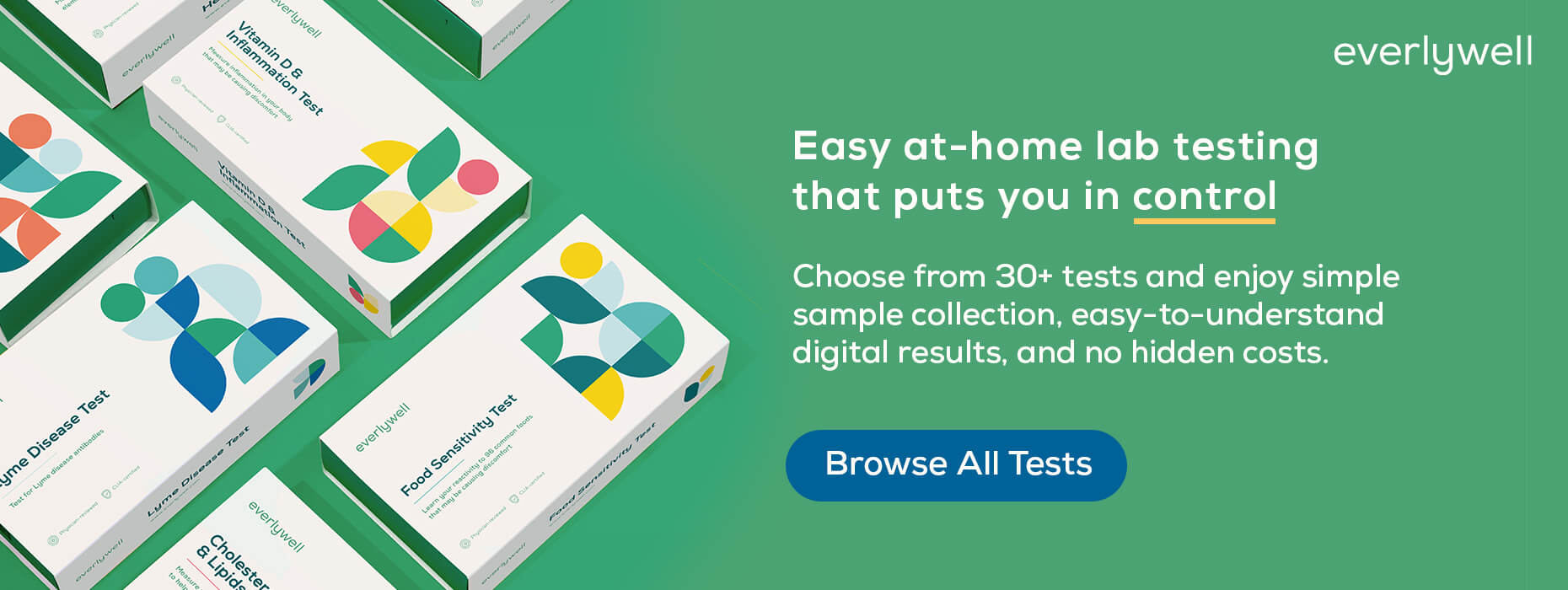
What is body composition?
Medically reviewed on March 8, 2022 by Jordan Stachel, M.S., RDN, CPT. To give you technically accurate, evidence-based information, content published on the Everlywell blog is reviewed by credentialed professionals with expertise in medical and bioscience fields.
Using a scale is an easy way to track your body weight, but most scales can’t measure other factors important for health—such as whether you’ve lost essential fat or have gained lean muscle mass.
Curious to learn of a better way to measure your overall fitness? One of the most helpful ways is to measure body composition. In essence, a body composition test refers to the different components the body is made of and their proportion to each other.
Because different people have different proportions, there’s no cut-and-dry way to say what the “right” body composition is. However, body composition is a helpful way to understand one’s individual health and fitness. In the end, a body composition measurement can reveal much more than any scale can.
Body composition: the body’s building blocks
So what is body composition? In general, it refers to the way the body is made up of many kinds of tissues [1]. Keeping each of them in balance is important for health, and these tissues can also shed light on how you’re progressing if you’re aiming to build strength or lose fat.
The body is made up of numerous, smaller parts, and body composition can be understood through the lens of these general categories:
- Fat
- Bones
- Muscles
- Fluids
- Soft tissue
While all these components are important in making up the body, the proportion of fat to the rest is often considered one of the most telling measurements for your overall health. This is because having too much body fat relative to the other proportions can increase the risk of experiencing certain health issues [2].
When measuring body composition, it’s common to measure in terms of fat and non-fat mass, rather than measuring all the body’s components separately. In doing so, you can determine what percentage of the body is made up of fat—in other words, the body fat percentage.
Why body composition matters for your health
Why is it important to understand your body composition? According to the National Heart, Lung, and Blood institute, or NHLBI, having too much body fat can increase the risk of developing certain health conditions, such as [3]:
- Coronary heart disease
- Stroke
- Type 2 diabetes
- Arthritis
- Breathing problems
- High blood pressure
Keeping body fat percentage in a healthy range may help avoid these complications and can improve quality of life in the long run.
There are many benefits of physical activity, and when it comes to improving physical fitness, understanding body composition can provide helpful insight. This is because body composition can measure fat mass and non-fat mass separately.
So, if you’re following a workout routine to build lean muscle, tracking body fat percentage can help you determine if any changes in body weight are due to gains or losses in muscle mass or fat.
Ways to measure body composition
There are multiple options for measuring body composition. When deciding which one is best for you, you’ll need to consider a few different factors, including:
- Cost
- Accessibility
- Accuracy
If you want to measure body composition at home, for example, you might want to choose a low-cost method you can purchase and use on yourself.
To help you determine the best way to measure body composition, we’ll consider a few of the most common options below.
Calculate BMI
Body Mass Index, or BMI, is a body composition measurement found by using height and weight [4]. The resulting number, the BMI, allows you to determine where you fall within set categories of weight. These categories include:
- Underweight
- Healthy weight
- Overweight
- Obese
With this method, you only need to know your height and weight and have access to a BMI calculator (which are widely available online). So, calculating your BMI is a free and accessible way to assess your body’s classification of weight based on set BMI charts.
However, if you use this method, keep in mind that it may not be the most accurate. For example, a BMI calculator might not account for increased muscle mass if you lift weights six times a week or swim every morning. This means results might put you in a higher BMI category, even if you’re physically fit, due to the failure to distinguish body tissue types (in other words, muscle from fat).
Use a caliper
A caliper is one of the most affordable options for measuring body composition. This claw-shaped tool is used to measure body fat by lightly “pinching” folds of skin at various parts of the body and measuring their thickness. These measurements are then calculated to determine your body fat percentage [4].
You can buy a caliper to use at home for as little as $5, but using one on yourself is sometimes tricky. Still, online calculators can help you make sense of your measurements. If you belong to a gym or fitness center, they may help you take your measurements free of charge.
Because of the varying ways caliper measurements are taken, the accuracy of this method can differ—and you don’t learn much more than approximate body fat percentage. Despite this, a caliper is still one of the more accessible and affordable ways to measure body composition.
Use a special scale
If you’re looking for a more high-tech option you can still use at home, you might want to buy a scale that measures body composition. Many of these types of scales work by using bioelectric impedance analysis, or BIA.
BIA measures body composition by sending a small electrical current through the body [5]. The scale then measures the body’s resistance to the current and uses that measurement to calculate what percentage of the body is made up of fat.
Much like BMI calculators and calipers, a BIA scale can help provide a general idea of your body composition. The bonus here is that BIA scales usually give you a more accurate read of your actual fat percentage.
Still, there are some catches. For example, a BIA scale needs to take different factors into account to accurately determine body fat percentage, including your:
- Age
- Ethnicity
- Sex
- Physical activity level
Most store-bought BIA scales don’t allow you to enter this level of detail. Plus, they’re a bit more expensive than other options, ranging from $30 to more than $200 in price.
Get a body composition test
Although previously limited to medical and research labs, body composition tests that use advanced technology are now more widely available to the public. While expensive, they can offer more accuracy and provide more details about the body’s makeup.
There are several different types of body composition tests available, including:
DEXA scan – This method uses X-rays to take images of the body. These images are then used to measure the body’s percentages of essential fat, lean tissue, and bone density [5].
Hydrodensitometry – This method measures the body’s mass while submerged underwater in a special tank. Body fat percentage is then calculated based on how much volume the body takes up compared to the amount of water [6].
BodPod – Also known as “air-displacement plethysmography,” or ADP, this method involves sitting in a tank called a “BodPod” that measures the air pressure around the body. That body composition analysis is then used to calculate the body’s density and composition [7].
Depending on where you live, you might have difficulty finding a body composition testing facility. Plus, these tests tend to cost more, with DEXA scans starting at around $125 [8].
Fortunately, some fitness centers, spas, and healthcare providers are starting to offer them. And although you’ll still experience some variables from person to person, research has shown that these methods are more accurate overall. So, if you’re looking for a detailed assessment of body composition, you might consider such tests a worthwhile investment.
Ways to improve your body composition
Once you’ve learned about body composition, you may want to work to improve it. This may involve reaching a lower proportion of body fat to the rest of the body [3]. Many of the lifestyle changes you can make to improve body composition are the same changes you might make to achieve better overall health and fitness. These include:
- Eating healthy foods
- Exercising often
- Drinking plenty of water
- Sleeping well
However, it’s also important to understand that the body’s hormones and other individual factors can affect your body fat percentage and muscle mass. If you’re struggling to improve your body composition through healthy lifestyle changes alone, consider reaching out to a healthcare provider and discussing options for increasing your success.
Build your body knowledge with Everlywell
Understanding body composition can help you work toward better overall health. Plus, compared to simply weighing yourself, tracking your body fat percentage provides a more useful way to measure physical fitness.
Looking for even more ways to improve your health awareness? With Everlywell at-home tests, you can discover other details that could be related to body composition. Choose from options like the Men’s Health Test, which measures key hormones involved in muscle mass, weight balance, and energy levels.
Related content
Alcohol and testosterone: what's the connection?
References
1. Macek P, Biskup M, Terek-Derszniak M, et al. Optimal Body Fat Percentage Cut-Off Values in Predicting the Obesity-Related Cardiovascular Risk Factors: A Cross-Sectional Cohort Study. Diabetes Metab Syndr Obes. 2020;13:1587-1597. Published 2020 May 12.
2. The Health Effects of Overweight and Obesity. Centers for Disease Control and Prevention. URL. Accessed March 8, 2022.
3. About Adult BMI. Centers for Disease Control and Prevention. URL. Accessed March 8, 2022.
4. Overweight and Obesity. National Heart, Lung, and Blood Institute. URL. Accessed March 8, 2022.
5. Borga M, West J, Bell JD, Harvey NC, Romu T, Heymsfield SB, Dahlqvist Leinhard O. Advanced body composition assessment: from body mass index to body composition profiling. J Investig Med. 2018 Jun;66(5):1-9.
6. Aristizabal JC, Estrada-Restrepo A, Giraldo García A. Development and validation of anthropometric equations to estimate body composition in adult women. Colomb Med (Cali). 2018;49(2):154-159. Published 2018 Jun 30.
7. Wingfield HL, Smith-Ryan AE, Woessner MN, Melvin MN, Fultz SN, Graff RM. Body composition assessment in overweight women: validation of air displacement plethysmography. Clin Physiol Funct Imaging. 2014;34(1):72-76.
8. Bone-Density Tests. American Board of Internal Medicine. URL. Accessed March 8, 2022.
